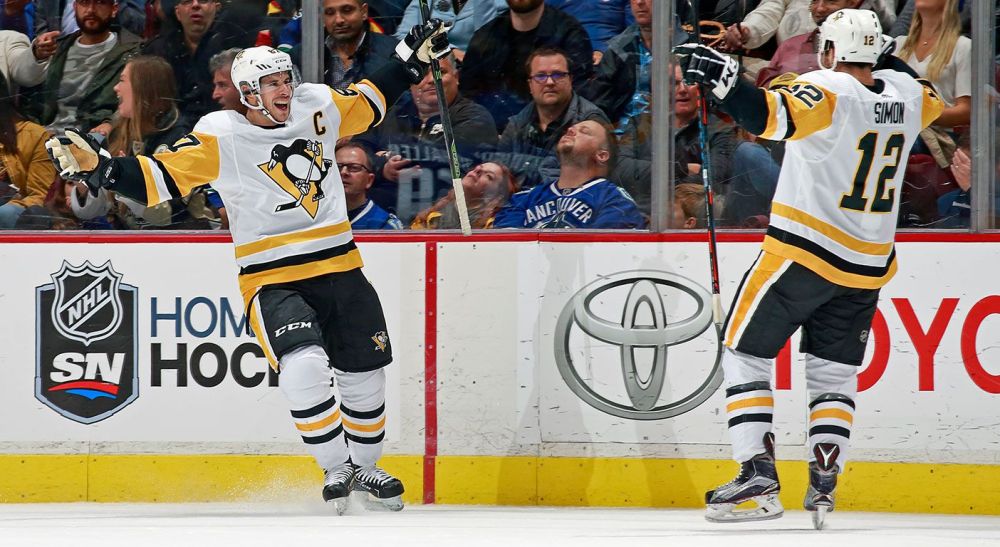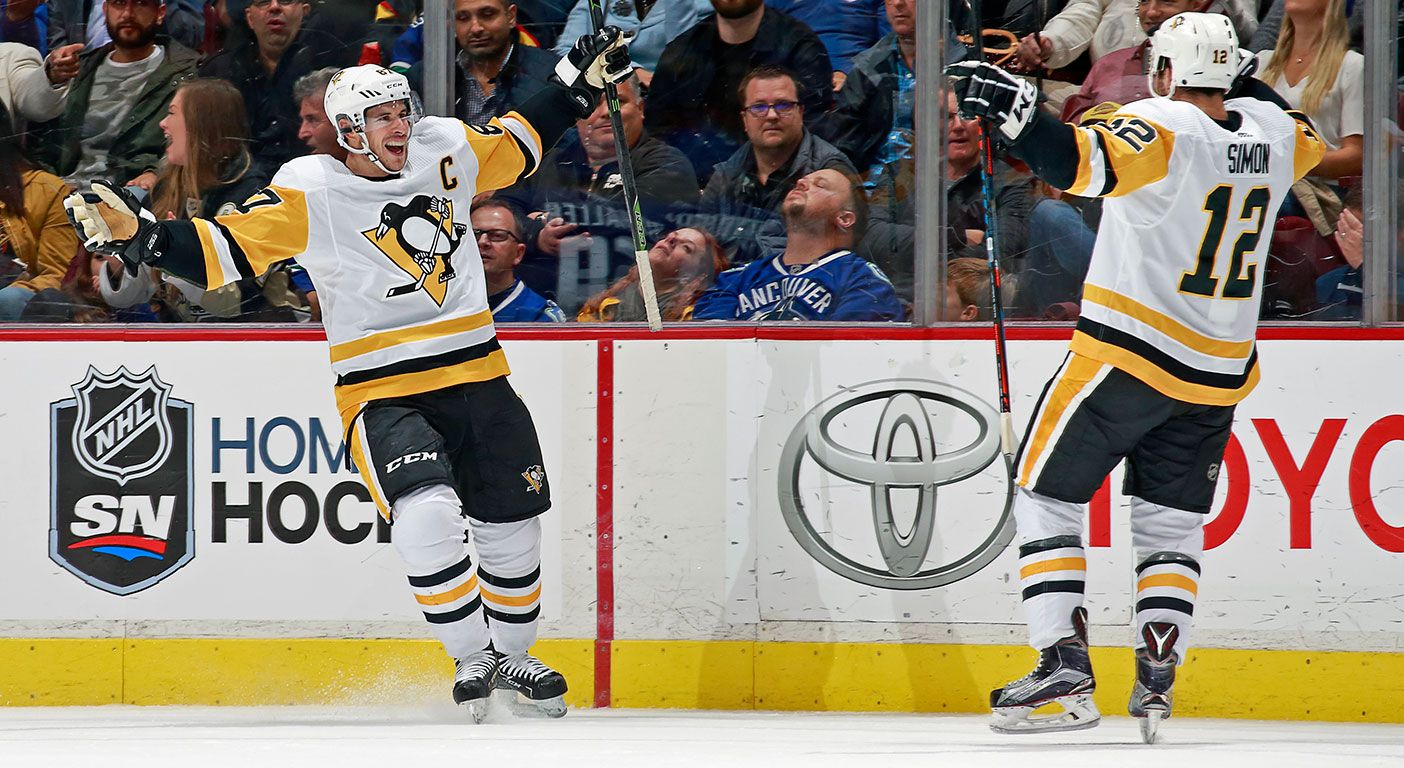
After Sunday’s 4-1 loss at PPG Paints Arena, which saw the Penguins fall into a 3-0 hole in this series with the Islanders, few players faced the fanbase’s ire more than Dominik Simon.
Not Jack Johnson, whose play in Game 3 was among the worst on the ice.
Not Matt Murray, who gave up goals instead of stopping every single puck thrown his way.
No, it was Dominik Simon, whose insertion onto Crosby’s right wing was dubbed “baffling” in some circles, despite being a player that Sidney Crosby himself invited to train with him this summer.
Don’t believe me? Just read the replies to this tweet after Guentzel put a pass into Simon’s skates, keeping Simon from being able to bury a goal on a 3-on-1 late in the first period yesterday (despite Simon getting a piece of the puck with his stick even after taking it off of his skate):
the penguins post season summarized in a gif pic.twitter.com/Ao3hxr6kJf
— nerd king geoff (@geoffwithano) April 14, 2019
We can microanalyze this play to death, but there are three simple truths here:
1) Nick Leddy defends this decently well, running Guentzel out of real estate.
2) Jake Guentzel’s pass was put in the only place he could’ve put it. That just so happened to be in the skates of Simon. By the time Guentzel goes to pass, he probably should’ve just shot the puck anyway, but that’s a different conversation altogether for the 40-goal man.
3) Sidney Crosby probably doesn’t even score here.
In fact, Sidney Crosby has gone this entire series without scoring, rendered largely ineffective by the Islanders forecheck and neutral zone trap.
However, even from eye test perspective, Simon on Crosby’s right wing did a lot of good things yesterday.
Exhibit A:
In the above, you see Simon drive straight to the side of the net, tying up with Pulock and keeping him from pressuring Crosby as 87 spins away from Eberle and walks in towards goal. Simon’s play here gives Crosby the time and space to put a pass over to Guentzel all alone on the backdoor, though Guentzel is unable to bury it.
Exhibit B:
Sidney Crosby is not a human being part 2389472938472 but Guentzel is drunk apparently pic.twitter.com/Nmk0AMr3v9
— nerd king geoff (@geoffwithano) April 14, 2019
Here, you see Crosby again manhandling the Islanders in the offensive zone, swinging out from his office after taking a pass from Simon along the near wall. Crosby, though, is able to walk out because Simon drives the net after the completion of his pass, taking 3 Islanders players with him in the process before, again, tying one up in front of the net for Crosby to have a passing lane to hit Guentzel on the backdoor. Again, though, Guentzel is unable to finish the chance.
But this shows up in the data, too.
First, let’s compare Crosby and Guentzel’s most common right wings in the three games this postseason at 5v5: Dominik Simon and Bryan Rust, understanding that the 3 game sample size and under 20 minutes of play isn’t a totally fair sample size, via Natural Stat Trick.
| Data Bucket (per 60 minutes) | Simon w/ Crosby & Guentzel | Rust w/ Crosby & Guentzel |
| Time on Ice | 15:01 | 18:10 |
| Shot Attempts For | 51.94 | 49.54 |
| Shot Attempt Share | 44.83% | 38.46% |
| Shots on Goal For | 31.96 | 23.12 |
| Shots on Goal Share | 40% | 38.89% |
| Expected Goals For | 2.49 | 2.19 |
| Expected Goals Share | 39.57% | 34.49% |
| Scoring Chances For | 35.96 | 23.12 |
| Scoring Chances Share | 47.37% | 31.82% |
| High Danger Scoring Chances For | 15.98 | 9.91 |
| High Danger Scoring Chances Share | 57.14% | 27.27% |
The results are staggering here. Across the board, the trio of Guentzel-Crosby-Simon has outperformed Guentzel-Crosby-Rust by a fair margin. Admittedly, seeing a line with Simon be under 50% across the shares of these data buckets is shocking, but for a goalless Sidney Crosby, to be on the ice for 8+ more shots on goal, 12+ more scoring chances, and 6+ more high danger chances per 60 minutes of 5v5 play with Simon on his right compared to that of Rust puts the Penguins captain in a better position to find the back of the net. Simon’s impact is tangible and quantifiable here.
In fact, when we look at the regular season, this trend is similar (as seen in late November when Guentzel-Crosby-Simon were lighting the world on fire). Again, all stats are at 5v5 and via Natural Stat Trick:
| Data Bucket (per 60 minutes) | Simon w/ Crosby & Guentzel | Rust w/ Crosby & Guentzel | McCann w/ Crosby & Guentzel | Hornqvist w/ Crosby & Guentzel |
| Time on Ice | 203:42 | 461:27 | 119:28 | 108:55 |
| Shot Attempts For | 72.75 | 64.23 | 67.29 | 68.85 |
| Shot Attempt Share | 61.44% | 51.95% | 54.25% | 59.52% |
| Shots on Goal For | 38.59 | 35.50 | 37.66 | 39.66 |
| Shots on Goal Share | 59.28% | 53.85% | 57.25% | 57.60% |
| Goals For | 5.30 | 3.38 | 3.52 | 3.86 |
| Goals For Share | 66.67% | 66.67% | 59.33% | 63.64% |
| Expected Goals For | 3.36 | 2.76 | 2.80 | 2.71 |
| Expected Goals Share | 65.35% | 51.97% | 61.39% | 59.74% |
| Scoring Chances For | 35.05 | 30.43 | 32.62 | 29.74 |
| Scoring Chances Share | 62.63% | 52.94% | 57.02% | 62.07% |
| High Danger Scoring Chances For | 16.20 | 13.78 | 14.06 | 13.22 |
| High Danger Scoring Chances Share | 69.62% | 54.36% | 66.67% | 63.16% |
Again, these results are staggering.
In fact, across all data buckets here, only the generation of shots on goal per 60 minutes of 5v5 ice time does not fall in Guentzel-Crosby-Simon’s favor.
The fact remains, though, that with Simon, Crosby and Guentzel generate more shot attempts, expected goals, scoring chances, and high danger chances than any of the other 3 linemates you’d typically associate with being the right winger on that line. And even in shots on goal, these 3 own the on-ice shares despite generating one fewer per hour than Simon-Crosby-Hornqvist.
And, even if you don’t care about advanced metrics, just take a look at the goal scoring rates: Simon with Crosby and Guentzel scored nearly 1.5 more goals per hour of 5-on-5 play than any of the other 3 trios did during the regular season.
That alone should tell you exactly why Simon was played on Crosby’s right side in the Penguins attempt at avoiding going down 3-0 in the series and why they should stick together to avoid the sweep.
Add The Sports Daily to your Google News Feed!
